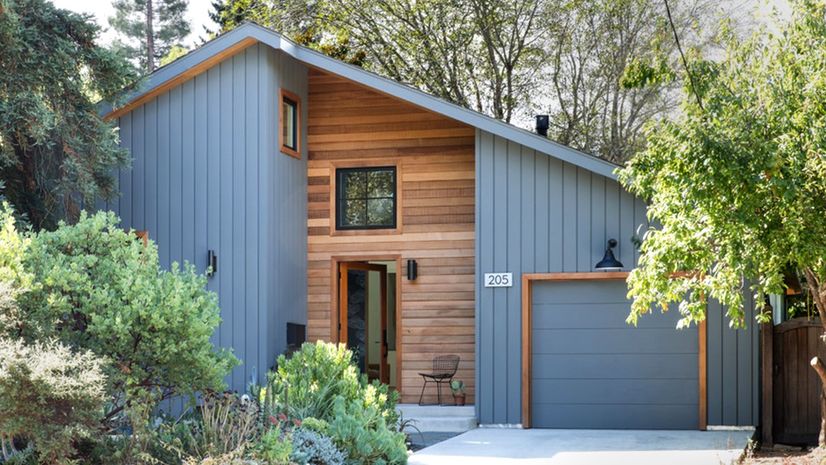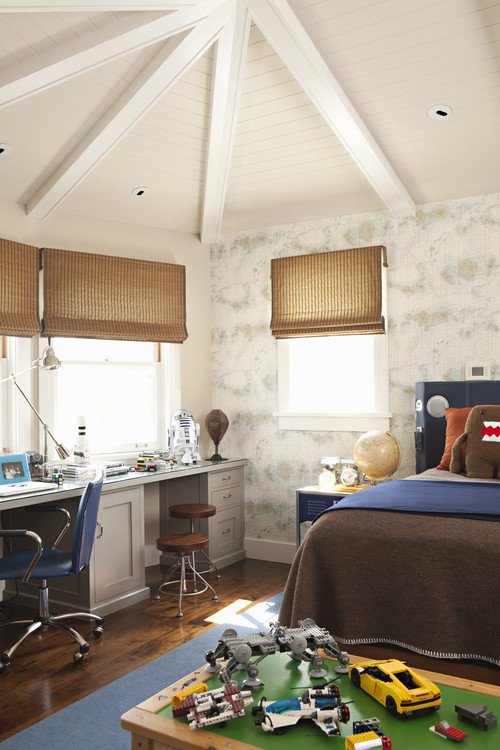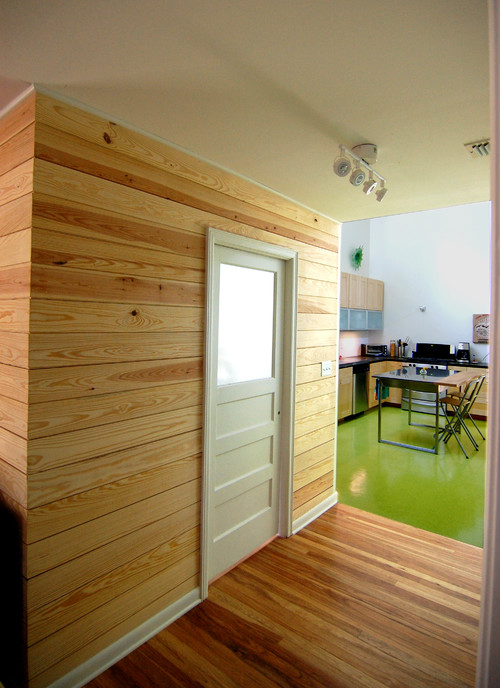By Jennifer Kelly Geddes
Feb 3, 2022

If reality TV shows are a harbinger of hot new trends that may soon take over American homes, then one upgrade that’s poised for greatness is car siding.
Despite its name, this wood wall upgrade has nothing to do with automobiles, and it’s not terribly different from shiplap, which became hugely popular after it was used liberally on the hit show “Fixer Upper.”
Car siding recently popped up in an episode of “Fixer to Fabulous,” where Dave Marrs explains, “Car siding is actually just three-quarter-inch pine paneling that looks really historical. You lay it vertically, just something unique for that small room.”
Given that shiplap is old news these days, could its cousin, car siding, assume its place as the reigning wall covering du jour?
“This look has become more popular recently because of how rustic it appears, but also thanks to its durability and the fact that it’s easy to install and clean,” says Marco Bizzley, an interior designer and consultant at HouseGrail.
In case you’re curious to learn more, or ready and raring to try this trendy new style, here’s everything you need to know about car siding.
What is car siding?

Car siding is wood paneling scored with a V-shaped groove. Its original use dates to the heyday of the railroads in the mid-19th century, when this treatment was used to line the insides of boxcars, particularly those that hauled produce.
“It’s known by a few different names, including boxcar siding, railcar siding, and V-groove, and is very similar to tongue and groove,” says Bizzley.
“Car siding is made from tongue-and-groove panels that have an additional groove down the center of each piece, so that the wood is actually twice as wide as it appears to be,” adds Cristina Miguelez, a remodeling and design expert at Fixr.
“It offers a different style of profile than its sister, shiplap,” adds Michelle Harrison-McAllister of Michelle Harrison Design. “The additional center grooves make your rooms feel cozier and rustic, while shiplap feels more nautical.”
Where is car siding used?

Car siding can be used in both interior and exterior applications. Many home decor styles can work with car siding, from boho and Scandinavian to cottage and farmhouse looks.
You can try car siding just about anywhere, says Bizzley, although it’s usually seen in the living room, hallways, the entryway, or a dining area.
“If you’re going to use it in the kitchen, consider making it an accent wall,” he adds.
“Cottagecore” adherents have flocked to car siding, says Miguelez, adding that it’s equally smart “on the ceiling of a sunroom for added textured or in mudrooms with a row of hooks hung just below the molding.”
Harrison-McAllister would place it on a bathroom ceiling for a warmer experience or as a kitchen backsplash to add “an organic wood feel to all-white kitchen cabinets.”
Pamela O’Brien of Pamela Hope Designs suggests using the tongue-and-groove design of car siding on the outside of a home, especially in the entry or a covered patio.
“It helps break up the stark black and white we see on many modern exteriors, and it also softens a stone or brick home,” she says.
Car siding installation

“To install car siding, the professional method is to remove the drywall and put a plywood substrate behind it and then use a nail gun to attach the new panels,” explains Angela Reynolds of the eponymous design firm.
You can also get away with putting car siding right on drywall, she adds.
It is almost a snap-and-go process in that one end has the V channel and the other features a protruding piece, allowing the two to fit snugly together.
A shiplap plank, on the other hand, is laid right over the edge (also called an overlapping joint) of the next plank.
Car siding costs

According to Reynolds, car siding is sold by the linear square foot, so your costs will depend on how big your room is plus the cost of labor.
“Due to COVID, material and labor have increased 20% to 30%,” she adds.
Per Fixr, prices for exterior tongue-and-groove paneling run about $5 to $15 a square foot.
Want to do it yourself? Home Depot sells car siding for a reasonable price.
“It’s more expensive than wallpaper,” adds Reynolds, “but also more durable, and wood is more detailed in appearance.”
Should you paint or stain your car siding?

Personal preference will influence the decision here, but you could try both finishes. Paint and stain will hide a host of imperfections in the wood.
“A slight stain will emphasize the beauty of the natural wood,” Harrison-McAllister says, “whereas paint on car siding embraces that groove detail.”
You can also leave your car siding plain, as shown above on this accent wall of natural pine.
If you’re hoping for a more traditional look, you can take your car siding all the way to the ceiling, says Bizzley.
“If you’re going to create a country contrast, you can install it halfway and then pair it with some paint or wallpaper,” he says.
Source- https://www.realtor.com/advice/home-improvement/what-is-car-siding-hottest-trend-since-shiplap-explained/






